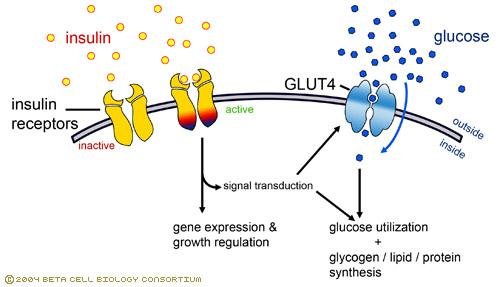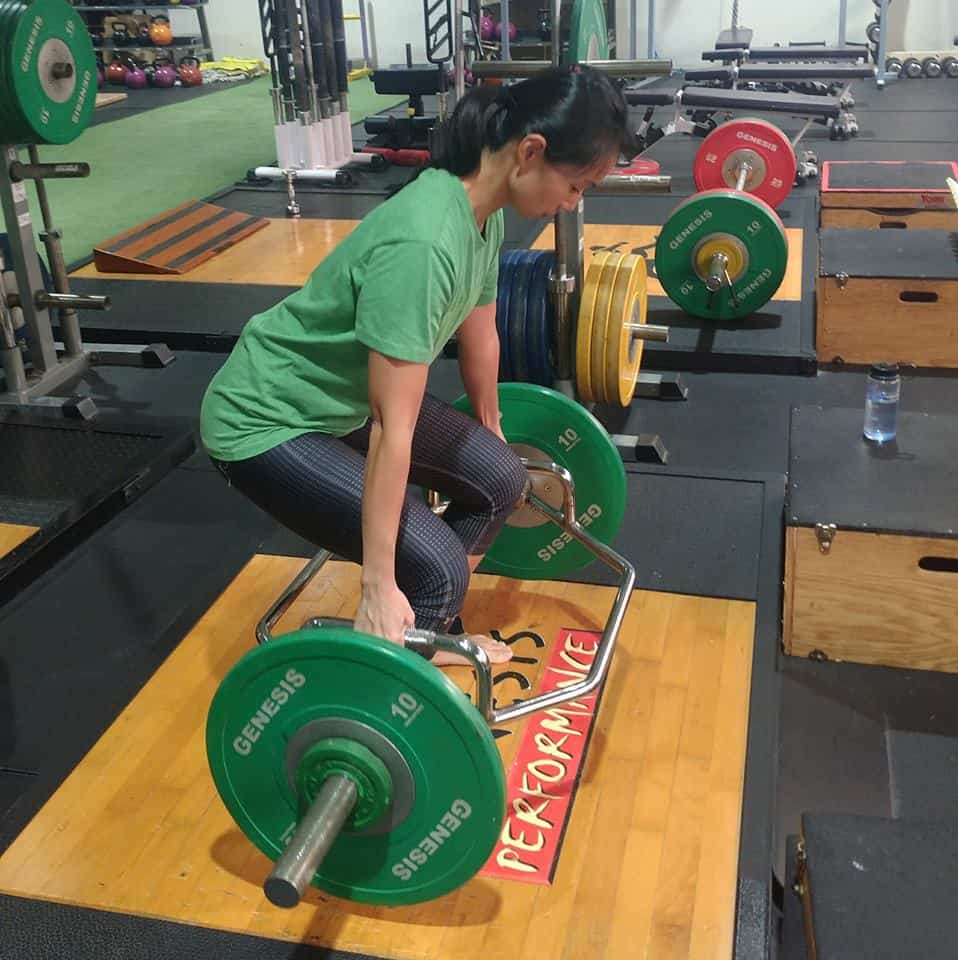Have you wondered how to exercise when you may have high blood sugar, pre-diabetes or even actual type 2, adult-onset diabetes diagnosed by a medical doctor?
About 75% of clients in our Singapore personal training gyms (Katong/East Coast/Marine Parade, Alexandra, and Raffles Place), start off with some kind of health issue. And high blood sugar or diabetes is a very common one.
Any form of exercise can be beneficial to help lower blood sugar but certain exercise methods can be more time-efficient. And nobody has unlimited time to exercise so we all want efficient!
Before you choose an exercise method to use when you have diabetes, it’s a good idea to understand how exercise affects high blood sugar and diabetes.

Do take note that high blood sugar and even type 2 diabetes, are not really diseases in themselves.
They are symptoms of a deeper problem.
This problem is that your cells cannot take in sugar from the blood. Therefore blood sugar remains high and diabetes progresses from there.
If this is the case then we need to ask: “what can we do to help cells in our organs and muscles take in blood sugar and burn it”. Instead of leaving it in the blood where it can cause damage to DNA, nerves, blood vessels and all kinds of other bad things.
In healthy people, the signal to bring sugar and other nutrients into the cell from the blood happen when the hormone insulin is released. Usually, this release happens when you eat food, especially carbohydrates but also protein.

When the cells get this signal from insulin, these things called GLUT4 (Glucose transporter type 4) open up gaps in the cell wall and allow sugars into the cell so the cell can use them for making energy.
Without this process, cells cannot make energy, cannot perform their function, and die.
In a person with chronic high blood sugar or diabetes, the insulin signal is messed up and the GLUT 4 does not open the door. So…the sugar does not get into the cell.
Double whammy. You get high blood sugar damaging your organs and blood vessels, but low energy production in the cell making you have low energy, and a poor metabolism leading to easy weight gain.
But there is good news.
Correct exercise helps get those GLUT4 to work to bring sugar into cells. No matter if your insulin signals are good or not. This is called “insulin-independent GLUT4 translocation” fancy words meaning GLUT4 does its job properly when you exercise – even if you have high blood sugar, diabetes or pre-diabetes!
And the type of exercise that does the best job of this is resistance training or strength training.
It has worked in practice for hundreds of our clients who have had high blood sugar/type 2 diabetes. And it’s backed up by research. Which shows that you get up to 34% lower diabetes symptoms and risks with resistance training vs aerobic training like walks or slow swims. **
And the same study (over 32,000 men) shows that resistance training has even greater risk reduction benefits when you are overweight (BMI over 30). In overweight people, it’s about 60% better than aerobic training.

There are a few reasons that resistance or strength training works better than slow aerobics.
- It increases the amount of lean muscle you have which increases the number of total sugars you can absorb from the blood into your muscles. Increased muscle mass is a well-known way to make the insulin signal more effective to get GLUT 4 to open cell doors for sugar to enter. Aerobic training does not increase muscle mass significantly.
- Strength training increases enzymes which store sugars in the muscle as glycogen (just a fancy way of saying sugar in muscles). Aerobic training does not do much of this.
- Strength training changes some of your muscle fibres from slow, endurance types into fast, strong types. And the fast types are better at clearing blood sugar and storing it in muscles.
There are probably other mechanisms that have not been fully studied yet… but why wait for those studies. Get the benefits immediately!
Aerobic training is also amazing and healthy but without a proper resistance training programme, you are not getting the most “anti-diabetes” and “anti-high blood sugar” benefits from the time you spend exercising. So combine both for best results.
It does take a bit of skill to make a good training programme for a person with diabetes but we have already done that for you. It is a simple do-at-home workout you can do if you have diabetes or high blood sugar. It’s designed to give you all the benefits of resistance training with minimum stress on joints or tendons.
These exercises are to be done in a circuit fashion. Start off simple with 1 or 2 rounds. This should take under 10 minutes. Once you can do this, progress to 5 or 6 rounds taking 20-25 minutes. This circuit can be done daily. Take note of the instructions, they teach finer points of the exercise so you do them with the greatest safety and with the greatest benefits.
Exercise 1 – Squats
Your legs are where the biggest muscle groups in your body are. Work them to stimulate lots of muscle fibres. This helps transport glucose into the cells so it’s not in your blood!
Stand with feet shoulder-width apart or slightly wider. Push knees forwards, lower buttocks, and squat as low as you are able to (imagine you are using a squatting toilet!) and stand up. Lower under control in 2 seconds, stand up in 1 second. Be sure to keep feet flat on the ground at all times.
Do 12-15 reps, then rest 30 seconds. then move on to exercise 2. (Dumbbell Optional)
Exercise 2 – Superman
The muscles all along the back of your body give you good posture and also are very large. Activating them with this exercise gets them to take in more glucose leaving less in the blood.
Lie down on the ground, face down. Lift chest and thighs off the floor, with arms in a “Y” shape and knees straight. Point feet away from knees, open up hands. Keep tongue on the roof of mouth, and breath through your nose throughout the set.
Hold 60 seconds (rest for a few seconds if needed but total 60 seconds of activity), then rest 30 seconds and move on to exercise 3.
Exercise 3 – Planks
Support your upper body on your forearms, and lower body on toes. Lift hips off the ground, and squeeze butt cheeks. Think of a flat lower back, and push your body away from the ground with your forearms and toes. Keep abdominals engaged, and stop the set if you feel your lower back.
Hold 60 seconds (rest for a few seconds if needed but total 60 seconds of activity), then rest 30 seconds and move on to exercise 4.
Exercise 4 – Shoulder Presses
Shoulder presses use almost all of your upper body muscles. The more muscles you use, the more muscles will take in glucose from the blood. Lowering your blood sugar.
Grab a pair of water bottles, or canned food (dumbbells are great if you have them!) Bring them to the outside of your shoulders, with your palms facing each other. Push the items above your head, ensuring that upper arms are in line with ears at the top of the movement. Lower under control in 2 seconds, and repeat.
Do 12-15 reps, then rest 30 seconds. then you have finished the circuit. Rest 60 seconds then start again with exercise 1.
This simple circuit is a great way to start implementing strength training into your healthy lifestyle. Add some gentle physical activity like walks or swims which are great for stress management and you should be able to get your blood sugar under control.
If you want more personalized guidance that includes personalized lifestyle, nutrition and habit formation plans to help you hit the high blood sugar from every possible angle. Check out our mid-life makeover personal training programme where our Singapore personal training team will design a customized programme to help you gain maximum health no matter what health issues you may have at the moment.
Or download one of our many free fitness e-books and video resources page. I’m sure there is something in there that can help you on your health journey.
**Grøntved A, Rimm EB, Willett WC, Andersen LB, Hu FB. A prospective study of weight training and risk of type 2 diabetes mellitus in men. Archives of Internal Medicine. 2012;172:1306–1312.
